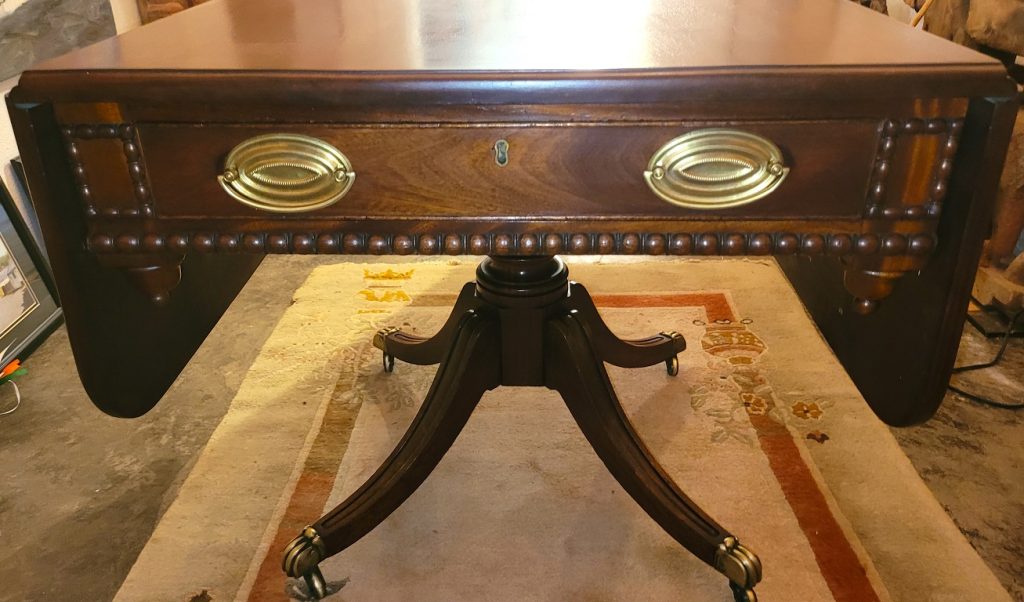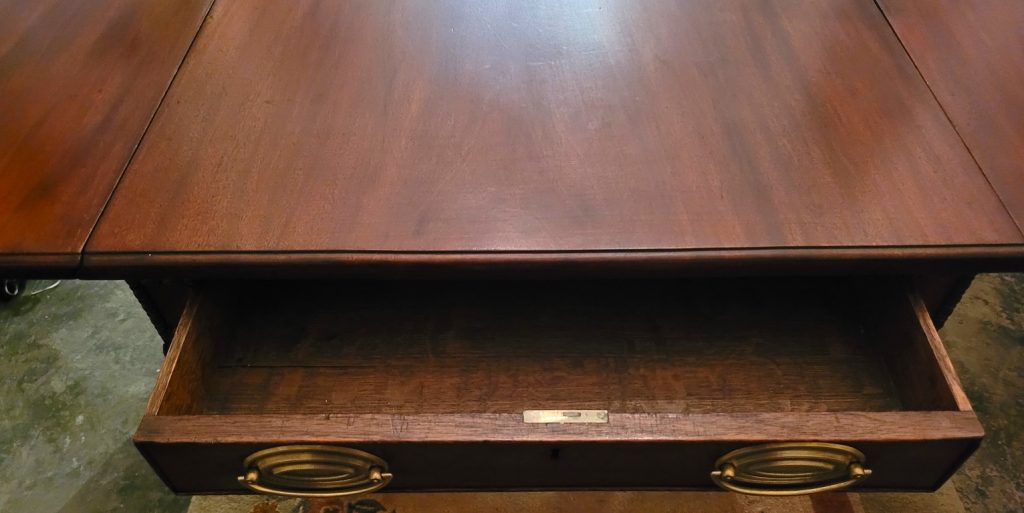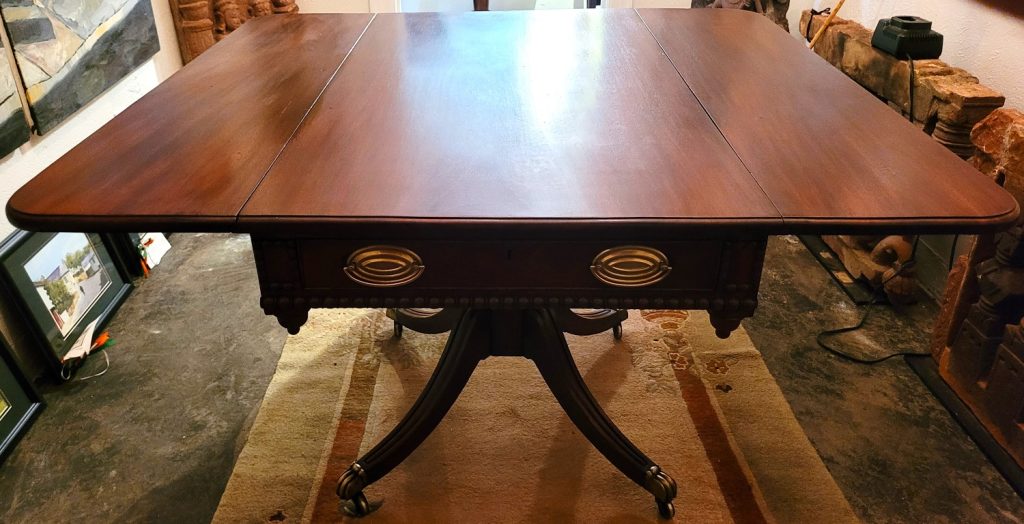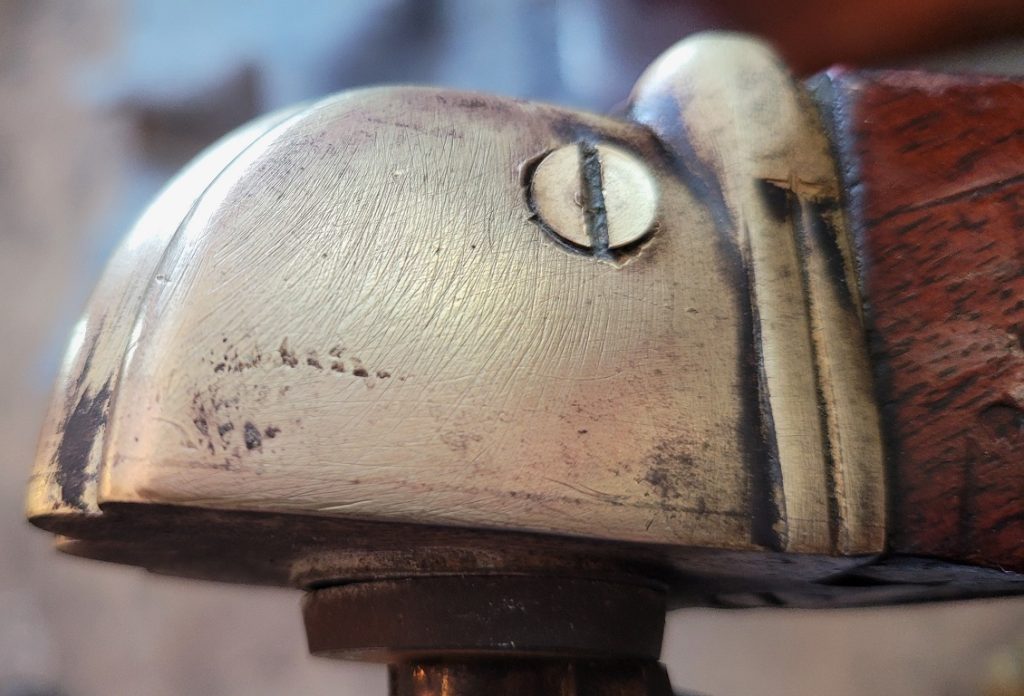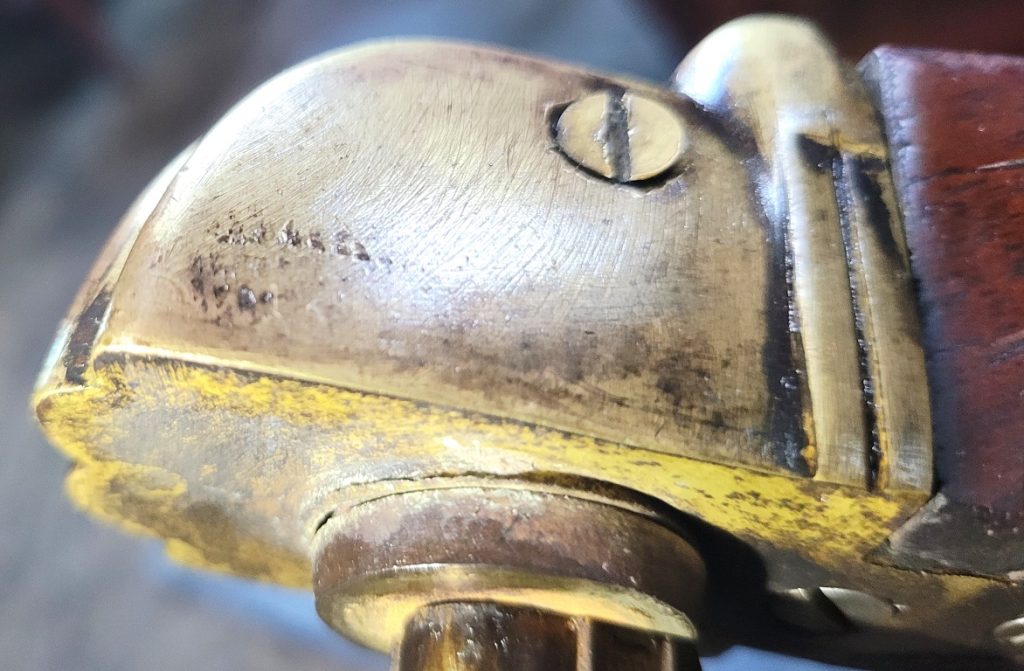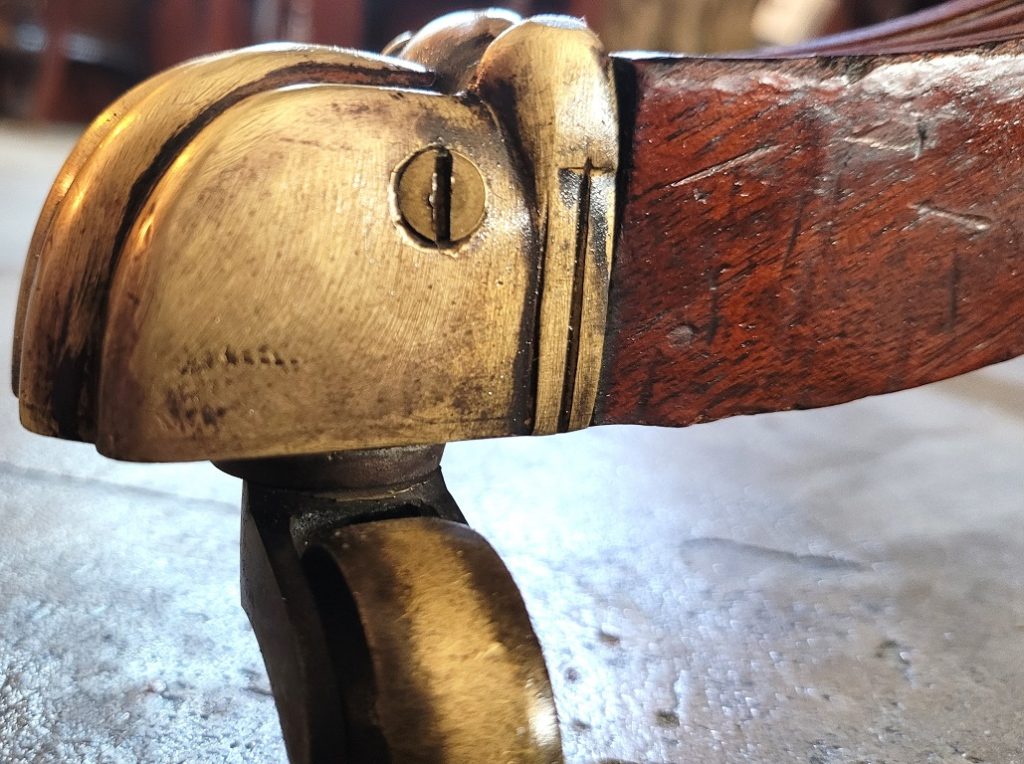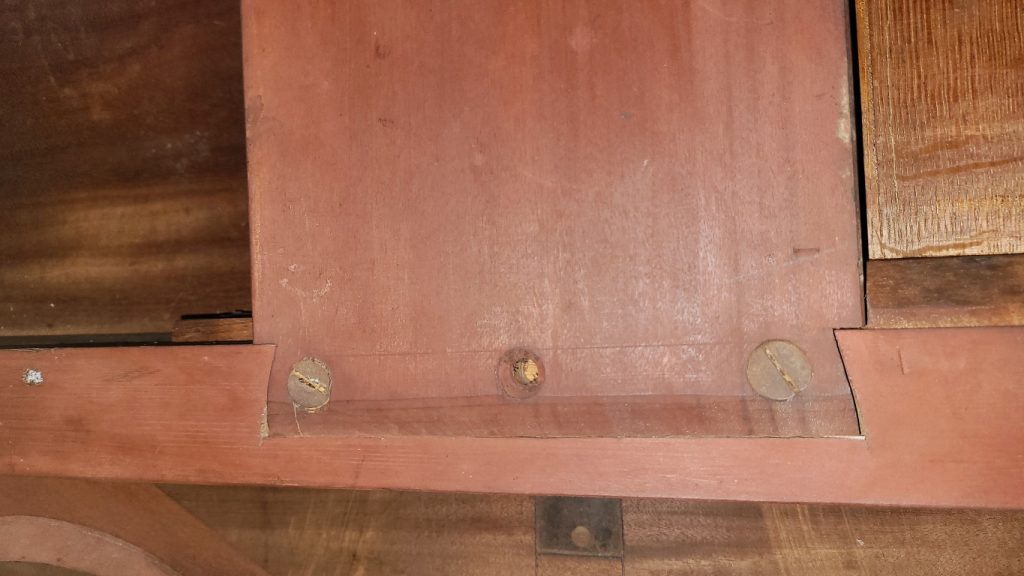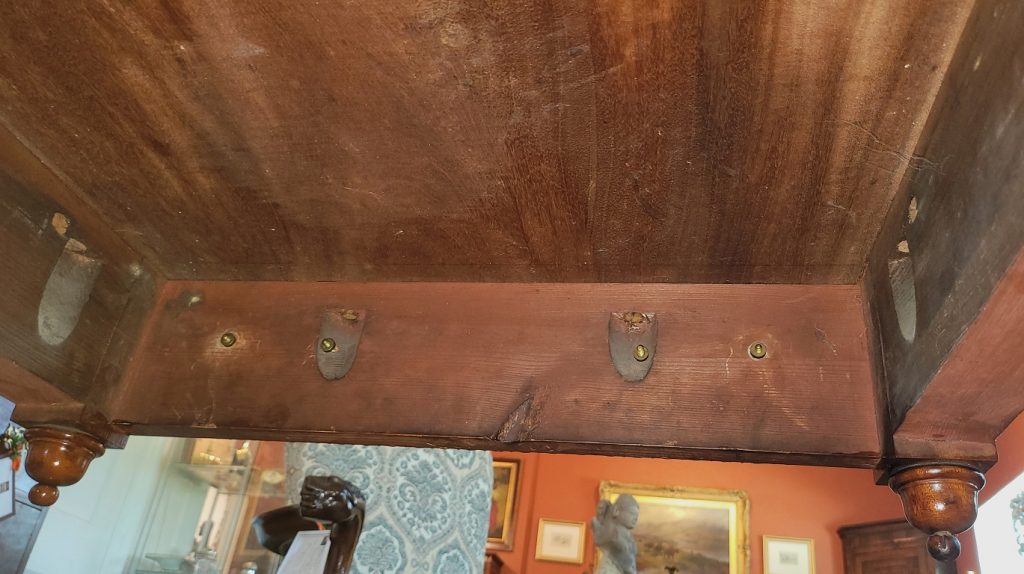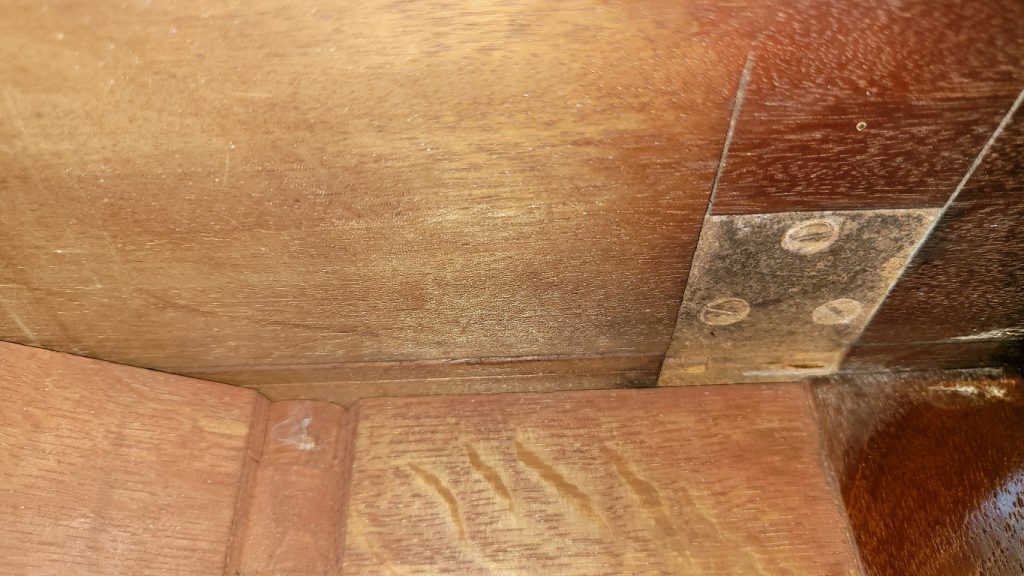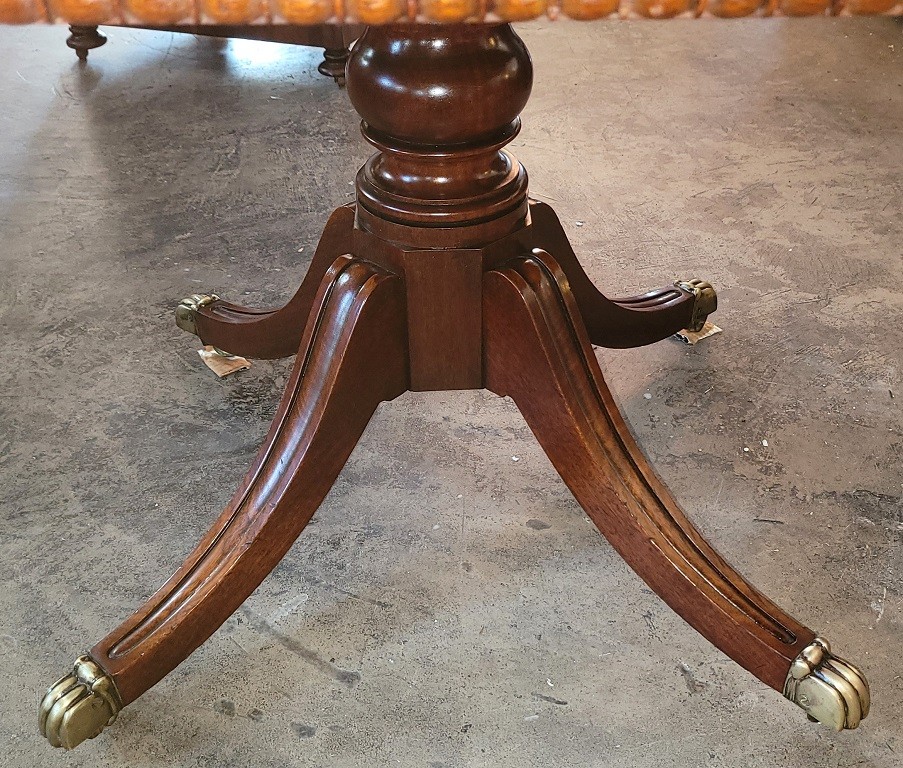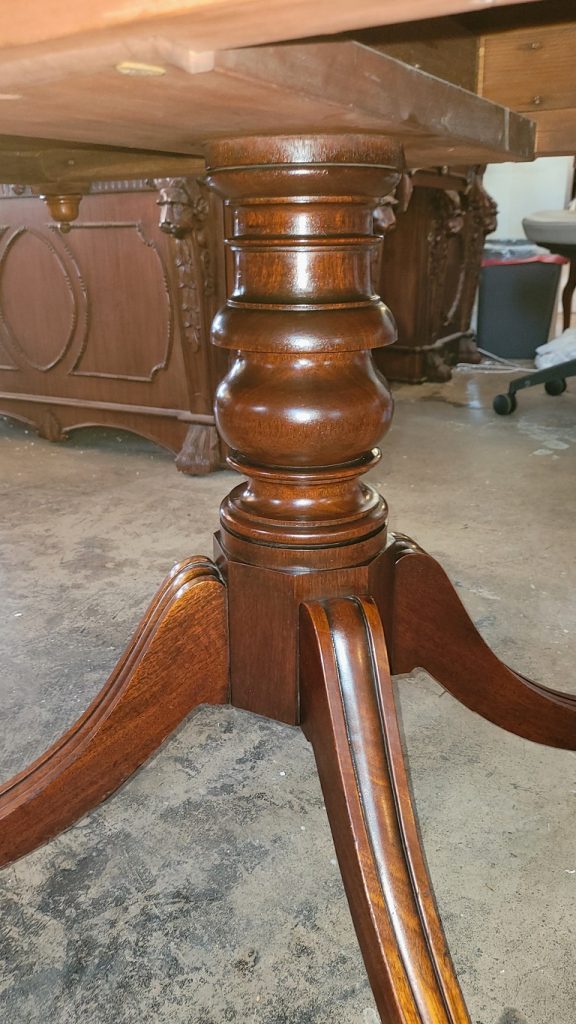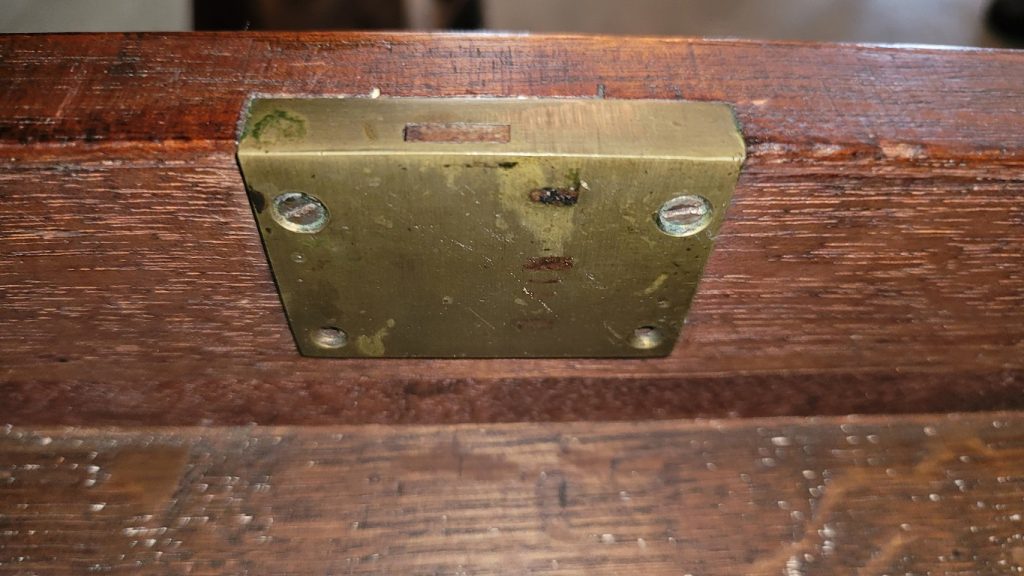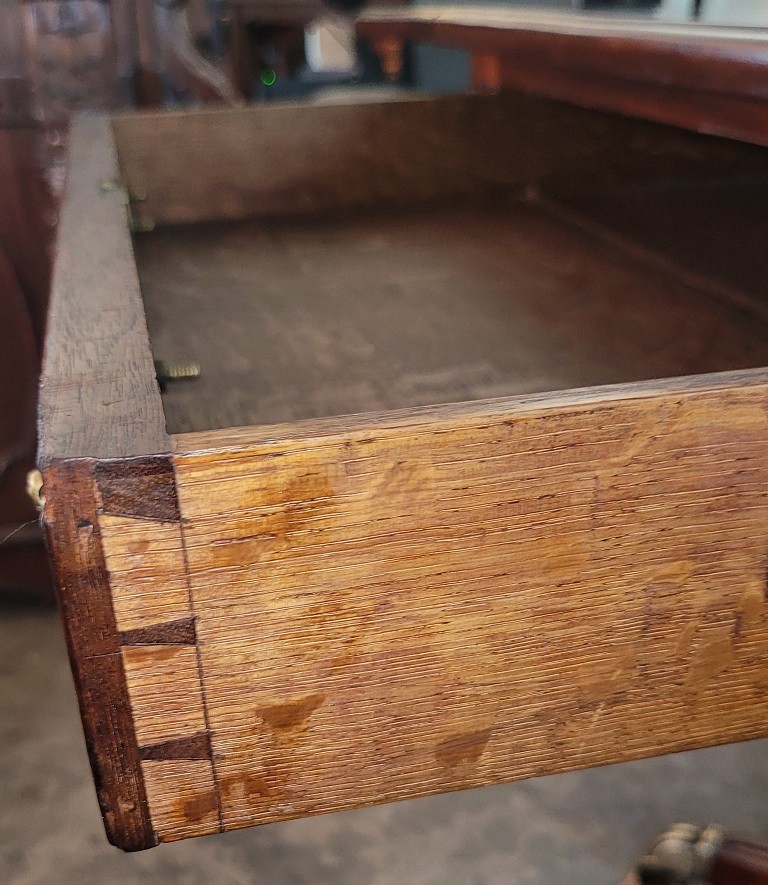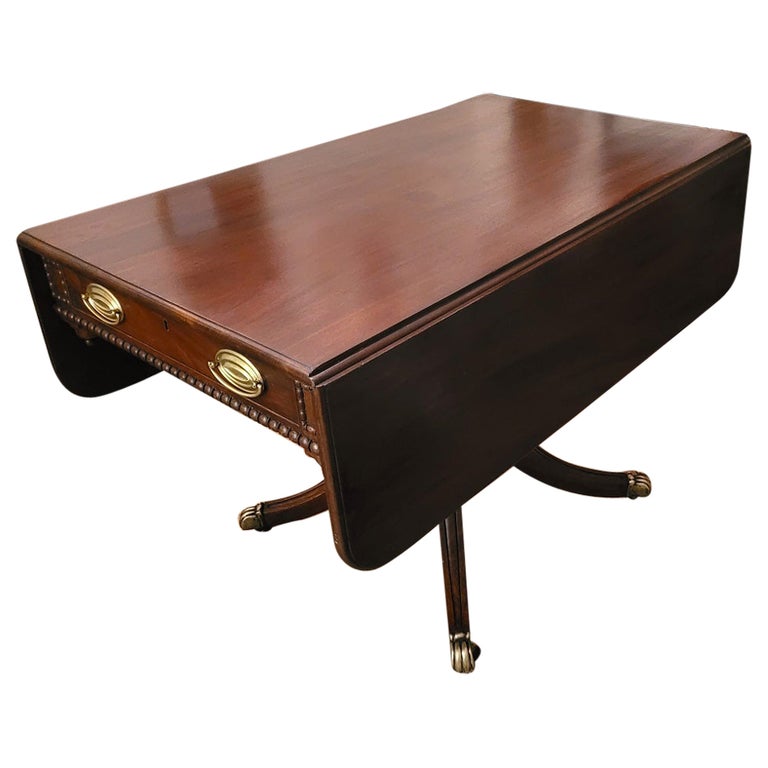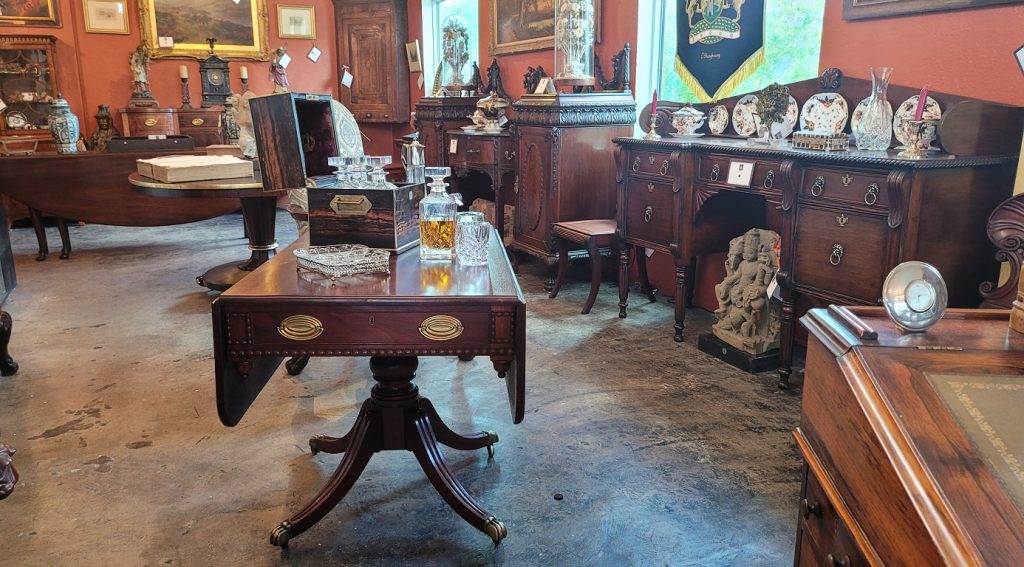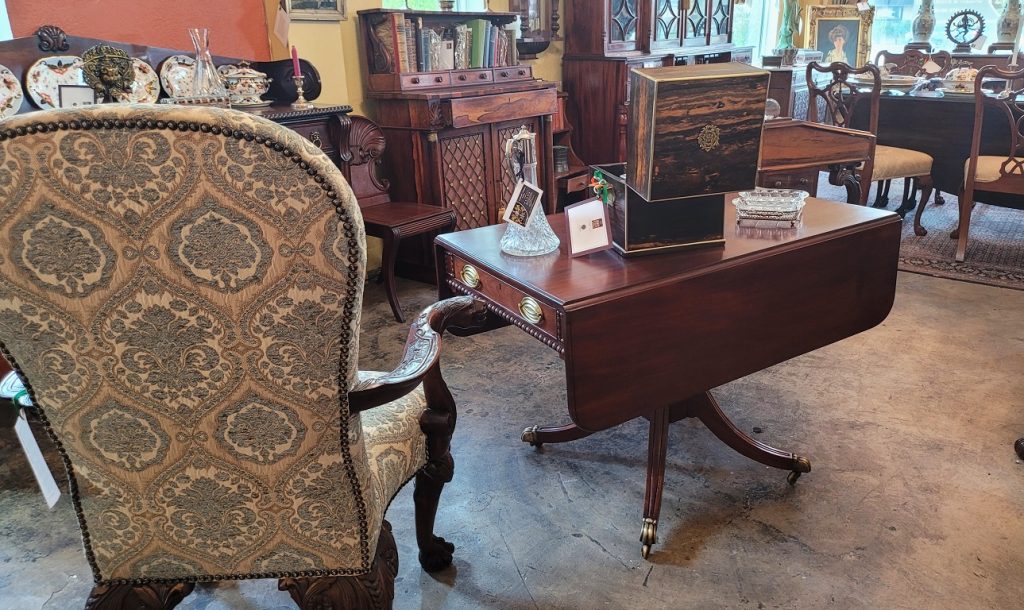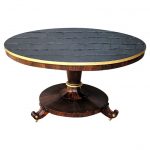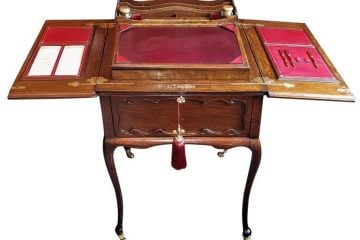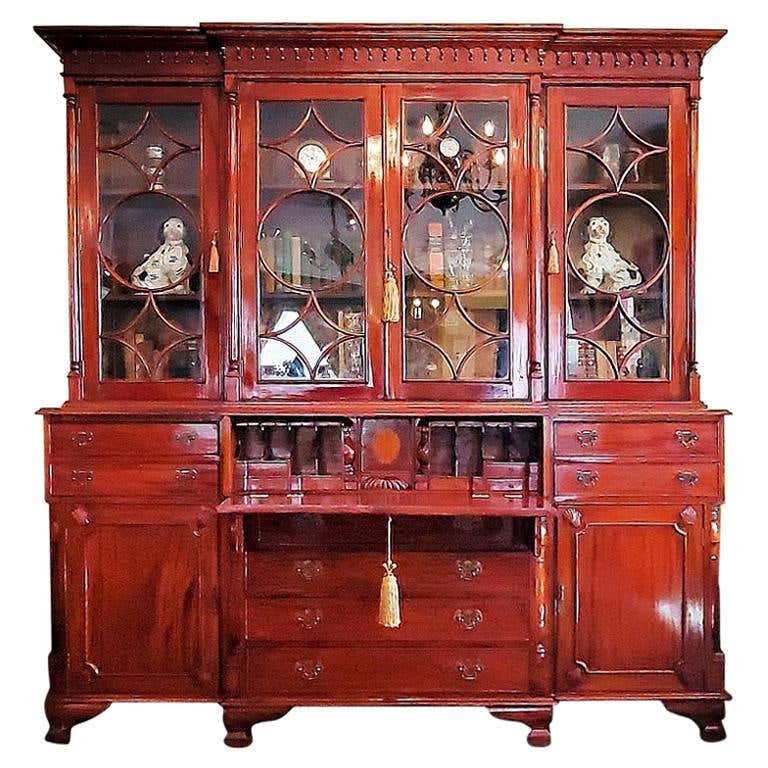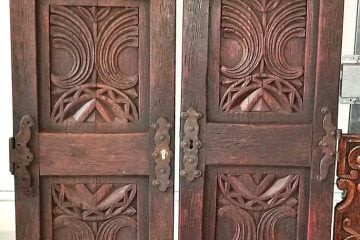Late 18C Scottish Regency Large Pembroke or Library Table
PRESENTING A SUPERB late 18C Scottish Regency Large Pembroke or Library Table.
Made in Britain, circa 1780-1810.
Made of beautifully patinated mahogany.
We can tell that this is an authentic ‘period’ piece and not a reproduction, by the patination to the wood, the methods of construction and the original brass ‘paw’ casters.
The table has all the signs of natural aging through normal wear and tear, and it was obviously impeccably maintained and therefore, in GREAT ORIGINAL condition when we got it, save, the drawer handles (wooden knobs) which were totally out of character and style, for the piece and we therefore replaced them with brass ‘Hepplewhite Style’ pull handles and covers (from the 1920’s), which we have added to bring the piece back closer, to it’s original condition, style and design. Apart from this, the table is TOTALLY ORIGINAL!
Also, when we first saw it, we immediately thought ‘Duncan Phyfe’, based upon (i) the style of the base 4 legs, (ii) the fact that it was located in the US and (iii) the beaded molding around the sides/drawer sections and the drop finials, were unlike other British/Irish Regency Pembroke table pieces, we have mainly experienced.
The lock on the drawer does not help, as it is unmarked, but it is the original and correct for the period.
When we received it, the central drawer was lined with an adhesive plastic lining and when we removed it, we immediately noticed that the secondary woods are, in fact, oak.
This was the ‘clincher’ for us, that it was, in fact, a British Regency piece, as oak was the standard secondary wood at that time in Britain & Ireland, whereas pieces made by Phyfe & Others in America, normally had pine or maple as secondary woods.
Once we were happy that is was a British and not American piece, we then turned our attention to the ‘beaded molding’ and suddenly remembered seeing similar types of molding on Scottish Regency and Georgian pieces.
The family estate, to whom this belonged, had long standing origins in Nova Scotia in Canada, before moving to Texas and had strong Scottish ‘roots’.
Eureka!
We believe this to be a Scottish Regency Table & QUITE RARE!
This would also explain our initial feeling, that this was a Duncan Phyfe Style piece.
Phyfe was born and raised in Scotland and emigrated to the US at the end of the 18th Century, as a ‘furniture apprentice’, and by the time he started making his own designs in the very Early 19th Century, he would have been inspired by pieces like this, that he would have worked on in Scotland, learning his trade, before emigrating.
Then, when photographing the piece, we noticed what appears to be either, a signature and/or markings on one of the original brass ‘paw’ casters.
We have tried everything, but simply cannot decipher or definitively identify the signature/mark. But, at a naked eye distance, it appears to have a signature and a date and we believe the date is ‘1780’ and above the date, what looks like ‘Gla’ which we believe stands for ‘Glasgow’.
It is ‘large’ for a Pembroke table, when the leaves are extended, which leads us to the opinion that it was perhaps more likely used as a ‘library’ table. It could even function as a breakfast table, seating 4 people very comfortably. From our research, we have discovered that many Scottish made Pembroke Tables, were ‘larger’ in size, again confirming our opinion. Also, we discovered 2 Scottish Pembroke Tables, that sold at auction (Bonham’s & Christies) that had the ‘beaded molding’.
It is in the design of a CLASSIC Pembroke Table with drop leaves, central drawer and fake drawer. The leaves lie flat, down by the sides when closed. The leaves are raised and held in place by a pair of swinging bracket supports on either side. When the leaves are up, it is almost square in shape. The table top has indented and curved edges.
Like almost all these style of tables, one side has a false drawer with the handles and covers for decoration only. The other side, however, has a large drawer that pulls outwards, again with matching handles and covers. This table has a the REALLY NICE Scottish ‘beaded molding’ to the drawer surrounds and downward pointing finials on all 4 corners.
The table sits on a large turned and bulbous central column/support with 4 reeded legs at the base, each ending in the original brass paw feet castors.
The construction of the base is most definitely ‘period’ as can be seen in the pics, with iron brackets supporting the base pillar with the legs (underneath).
The natural patina to the legs, is also further evidence of this being a ‘period’ piece.
Pembroke table, light, drop-leaf table designed for occasional use, probably deriving its name from Henry Herbert, 9th Earl of Pembroke (1693–1751), a noted connoisseur and amateur architect. The table has two drawers and flaps on either side that can be raised by brackets on hinges (known as “elbows”) to increase its size. Usually provided with casters (it was often used for bedside meals), the legs of the common English versions, as illustrated by Thomas Sheraton and others, are supported or reinforced by X-shaped stretchers.
In the United States a distinctive type of support, shaped like a lyre, became popular toward the end of the century. It is also known as a flap and elbow table.
Late 18C Scottish Regency Large Pembroke or Library Table.
Provenance: From a Private Collection of a Dallas Estate (formerly of Nova Scotia, Canada)
Dimensions: 28 inches tall, 41.5 inches wide and 25 inches deep – with leaves down.
Each leaf is 11.25 inches deep.
The central section/top is 23.25 inches deep
Condition: Very good original condition. Some very minor ‘scuffs/blemishes’ to table top through age and use, but nothing significant. The drawer handles are replacements (see full posting).
SALE PRICE NOW: $6,800




